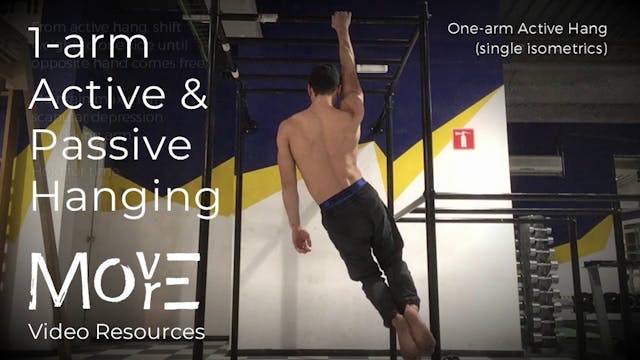Active shoulder-extension
Shoulder-mobility (range-development)
•
2m 0s
THE WHAT:
An open kinetic-chain context (i.e. the arms are free to move in space) for both range-development and strengthening of shoulder-extension. Whilst closed kinetic-chain, floor-based contexts (such as the 'AG support' and 'Table' holds) do also develop the same range, they express comparatively less "active" strength (i.e. actively PULLING the arms into the shoudler-extended position) as the hands are effectively fixed against the floor whilst the BODY moves in space. This difference, and attending to them, is also seen in lower-body mobility-development practices in pairs such as the 'Pancake' (closed kinetic-chain, legs "fixed", body moves), and then 'Compression' protocols (the body "fixed", and the legs actively PULLING into the end-range).
The 'Active shoulder-extension' drill, then, is a great complement to general development of this largely neglected range and serves well to bring it back onto the cortical map. Its practice is largely mitigatory toward regaining & maintaining STRUCTURAL BALANCE in relation to more common pushing patterns to the FRONT of the body (i.e. shoulder-FLEXION), and likewise common lifestyle habits characterised by "short & tight" muscles to the front of the body (e.g. chest, anterior-shoulders & internal-rotators). Looking toward developing 90-degrees of ACTIVE shoulder-extension is a great long-term objective. In practice, each variation - pronated or supinated - will "reveal" and attend to different restrictions namely in the shoulders, biceps and forearms, and so whilst both are valuable, the practitioner is advised to focus on whichever feels the most RESTRICTED, and this will have the most transferrable benefit once developed.
Resource contents:
0:05 - Pronated variation
0:57 - Supinated variation
___________________
For programming, guidance, & support for your physical practice:
The 'Video Resource Library' (VRL): https://www.movemorevrl.com/browse
FREE fundamental prehabilitation program: https://www.movemoremp.com
Online Support (1 to 1 coaching): https://movemoremp.com/onlinesupport
Elements (standardised programs): https://www.movemoremp.com/elements-s...
[email protected]
Up Next in Shoulder-mobility (range-development)
-
Fundamental hanging contexts
THE WHAT & HOW:
A simple reason for the perspective and practice of hanging is that, as with the fundamental resting or 'passive' squat, it is a movement pattern built into our physiology which becomes not only neglected, but culturally & socially discouraged as we become adults.The disuse of s...
-
1-arm 'passive' & 'active' hang
THE WHAT & HOW:
The two ends of the overhead-pulling kinetic chain are the hands (connecting the arms to the anchor-point), and the scapulae (connecting the arms to the body). Developing the 'Passive' and 'Active' hang unilaterally (i.e. 1-arm), follows the same progression perspective as bilater... -
Culturing movement habits: Hanging at...
THE WHAT:
Hanging is a movement habit that requires culturing. The benefits of regular hanging are many, but primarily related to decompression of the shoulder & improving the quality of its connective tissues and identifying & releasing excessive resting muscle tone around the lumbar spine.For...



